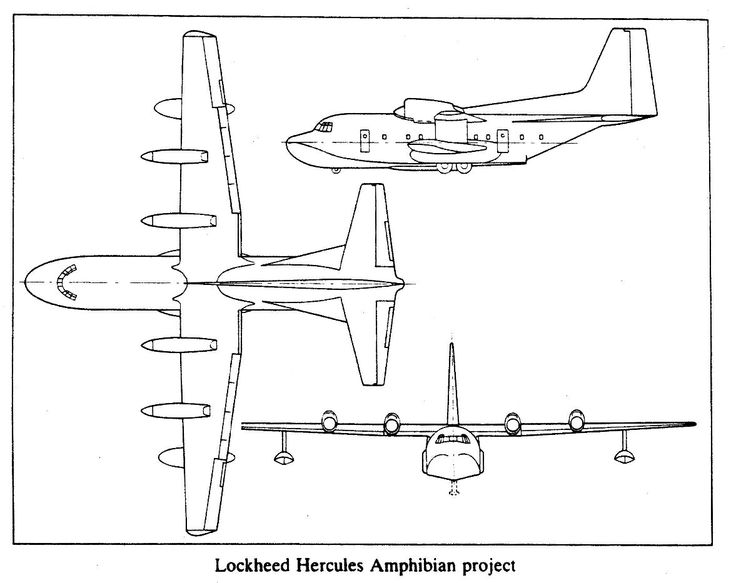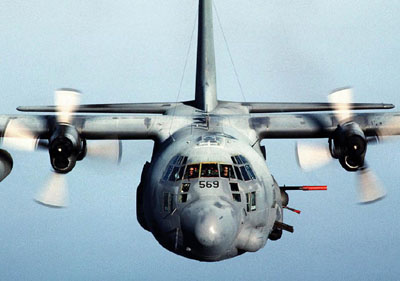 |  | ||||||||
Robotech Defense Forces. | Robotech Defense Forces. | ||||||||
The intention at the time was simply interim mass-transport. However, with the success of the program the C-130 remained in service for so long that even the UGC REF keeps them in service. Several were modified aboard the SDF-001 MACROSS for long-range Search And Rescue a mere month after the Space Fold accident (though to limited effect, due to injuries sustained in combat). There are a great many variations on the C-130 including the standard cargo versions (including troops or passengers), the MC-130 Combat Talon modified with much better sensors, the AC-130 gun ship version, the KC-130 tanker version, and the SC-130 version first developed aboard the SDF-001 (see SC-130). Many of the pre-GCW-era C-130 have been refitted to modern specifications; The refits were relatively easy. The avionics were replaced by more advanced avionics, the aircrafts skin was replaced with MDC alloys, and the grav pods were installed in those that did not have them, even though most pilots still prefer to use the wings to fly. This aircraft can carry up to 20 tons of cargo, ninety two passengers, or sixty four paratroopers. The aircraft has large ramp in the rear for cargo and has two doors for paratroopers on either side of the body behind the landing gear mounts. The aircraft does not have an ejection system for the crew so in case of emergency the crew must have a grav pack or a parachute to survive. Most crews prefer to ride out the crash, and the C-130 has proven remarkably survivable; A KC-130 crashed nose-first into a mountainside, and with the exception of two crew members with broken bones (one a rib, the other an arm) and one crewmember with a 4" laceration on her forehead, the only injuries were moderate hematomas (big goose eggs). More noteworthy, however, was THE LACK OF A FIRE. Considering this was a fuel tanker variant, that lack of fire speaks volumes to the plane's survivability. There is no plan to take the C-130 out of service, due to the LOW cost of operation; For the same price of life-long expected operation for a C-130, the REF could OBTAIN a trans-atmospheric shuttle, but never fly her. Though the Titan Tunny and Mom's Kitchen are more robust and could carry much heavier loads, the cost of individual ships and operation is much lower, and very often the C-130 has not only sufficient cargo load, but more still. The advantage of the VTOL capability of the Titan and Kitchen no longer applies, due to the advent of grav pods (from the Atorian War). However, an extended upgrade program was put in place; Chiefly, all airframes built after 2212 were built as flying boats (using the maritime airframe pictured here), and secondly, all airframes in service at the time were converted to "All Condition Service," meaning that artic ski-landing gears and desert environment engine equipment are being uniformly installed. The last of the pre-2212 airframes was retired in 2315- One hundred and three years of service. The current airfarme configuration is quasi-submersible; The blade on the propellers can turn up to 90 degrees, allowing the airframe itself to settle into the water up to 10 feet if absolutely necessary (thought this is rare) with all external doors properly latched. A pair of topside hatches allow egress in such cases. The C-130 is NOT transatmospheric; Conversions of the planes done aboard SDF-001 were desperate measures that would NOT have been done under normal circumstances, and in fact wouldn't have passed muster at the time either were it not for lack of any alternatives (of which the IPA and her successors had many, which has only grown with time). They aren't even capable of atmospheric entry; Only one C-130 has ever been fitted with the Charonina-7 Re-entry Kit, that being airframe 2133821, only to prove that it "could" be done. The pilots on that mission stated unequivocally that they wouldn't recommend follow-up studies, despite full mission success (the UWA eventually put a stop to further studies in favor of standard aero-space shuttles). Despite this "shortcoming," the C-130 serves the UGC's interests on 99% of her member worlds in one fashion or another, most built locally (though Lockheed-Martin, which still very much owns and jealously keeps the rights to the planes, is well compensated; the UGC actually gives them the same amount they would have if they'd built the actual planes, without the expense of actually building the planes, a grand acknowledgement by the UGC of just HOW critical they feel the planes are). Even when a local counterpart is available, the C-130 is found, in all but the most backwater worlds- And this is changing, too. (The C-130 is also a bit of a propaganda piece by now, a kind of je ne sais quoi symbol of the Council itself, like Veritech Fighters or the SDF series ships. This is in no small part due to the fact that The Office Of The State operates these planes, too, so after a disaster one of the first signs that help IS coming is 3 to however many is needed C-130's flying overhead, with the lead plane firing flares in a red-green-red-green-yellow pattern; originally, and occasionally still, the pattern is used to identify ranges to locations where landing strips must be created DURING the landing itself, and has since become the sign that help is arriving.) Non-UGC Variants. The implication that the C-130 was only used by the American Empire is deeply erroneous; They were used by all of the Internationalist nations, many of the neutral nations, and even some of the Anti-Unifications nations (especially Russia). Further there were several thousand in civilian use as fire planes, mobile hospitals, and a wide variety of other duties. In fact, the only civilian duty they can not be used in is passenger aircraft, due to the airframe age at the time they are typically received and the extreme vibration experienced onboard. Model Number: C-130 Vehicle Type: Quad Engine Tactical Transport Aircraft Crew: Five Troops/Passengers: 92 (In place of cargo), 64 Paratroopers, or 74 patients on litters. M.D.C. by Location: | |||||||||
| * Wings (2)- ** Elevators (2)- ** Rudders (2)- ** Cockpit- | 240 each 120 each 120 each 180 | *** Engines (4)- *** Propellers (4)- Landing Gear (5)- **** Fuselage- | 160 25 10 each 500 | ||||||
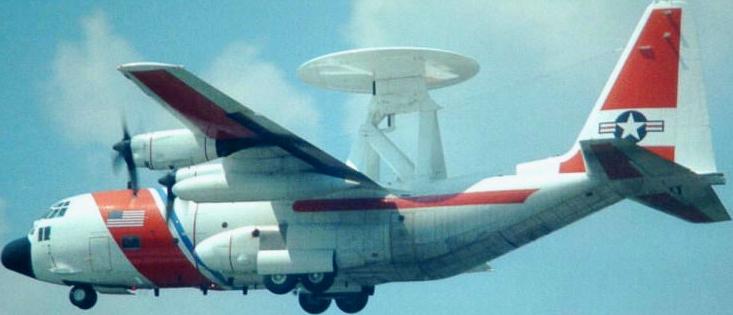 Notes: Notes:* Destroying a Wing will cause the plane to crash. ** Destruction of rudders or one elevator will still allow the aircraft to be controlled by the varying of power levels of the engines but transport has a penalty of -10 to dodge, and a -30% penalty to all piloting rolls. Destruction of both of the elevators will leave the plane uncontrollable and aircraft crew must evacuate to survive. *** The destruction of one engine and/or propeller will reduce the transports top speed by one quarter and give the pilot a -2 penalty to dodge as well as giving a 5% penalty to piloting. The destruction of additional engines and/or propellers will give cumulative penalties. Destruction of all four engines and/or propellers will cause the aircraft to crash. Pilot may attempt a emergency landing or transport crew can choose to eject. **** Depleting the M.D.C. of the fuselage will shut the Aircraft down completely, rendering it useless and causing it to crash if in flight. Speed and Statistical Data: | |||||||||
| Taxiing on Ground: 40 mph (64 kph). Can land and take off from primitive runways. Flying: 384 mph (618 kph/333 knots). Cruising speed is 300 mph (482.8 kph/260.7 knots). Service Ceiling: 33,000 ft (10,060 meters). Range: 3,000 miles (4,828 km/2607 nautical miles) with maximum payload. Hercules has approximately 25% better range when the aircraft is not carrying any cargo. The Hercules can be refueled in the air. Height: 38 ft 3 inches (11.66 meters) Wingspan: 132 ft 7 inches (40.41 meters) Length: 97 ft 9 inches (29.79 meters) Weight: 76,780 pounds (34,827 kg) empty and 175,000 pounds (79,379 kg) maximum takeoff weight. Powerplant: Conventional, Four 4,508 hp (3,362 kw) Allison T56-A-15 turboprops, uses aviation fuel. | Flight System: Primary: Aero-foil effect. Grav pods create distortion fields, and this can interfere with electronics. Therefore, most pilots prefer to use their normal wings. Secondary: Grav Pods. Allows vertical take-off and landing, but does interfere with some electronics (most notably anything pointed DOWN and MRI). Tertiary: Rocket Assisted Take Off Assembly (RATO). Can be used to reduce take-off area, or to gain a few extra knots for a few minutes (before over stressing the wings) to escape and evade enemy aero-space craft. Cargo: 20 tons (18.1 metric tons) Cost and Availability: 3.5 millioncredit; Almost always. Black Market Cost and Availability: Not very expensive and rarely available because they are openly available with the only restriction being armaments and some avionics/electronics. | ||||||||
| Weapon Systems By Variant (Military Versions only): Militry versions of the Herc are armed, though only the AC-130 variant is extensively armed. | |||||||||
| AC-130 Specter: Gun-ship variant of the C-130 with multiple weapons on the left side of the aircraft including two 7.62MM Miniguns, two 20MM Vulcan cannon, two 40MM Bofors Cannons, and one 105MM Howitzer. All cannons but the mini-guns can be trained on the same target and use a targeting computer. In most ways, the aircraft is identical to a standard C-130 but has the following differences: Crew: 14 - five officers (pilot, co-pilot, navigator, fire control officer, electronic warfare officer); nine enlisted (flight engineer, loadmaster, low-light TV operator, infrared detection set operator, five aerial gunners). Troops/Passengers: 10 Passengers or 6 Paratroopers maximum. Additional MDC By Location: 105MM Howitzer- 80. 40MM Bofors Cannons (2)- 40 each. 20MM Vulcan cannons (2)- 25 each. 7.62MM Mini-Guns- 10 each.Weapon Systems Specific To the Spectre: 1. One (1) 105MM Howitzer: Very powerful cannon but limited in rate of fire. Controlled by Gunner and are located on left side. Weapon is normally used at a fraction of possible range. Effective Range: 8.7 miles (14 km) for non rocket assisted and 12.1 miles (19.5 km) for rocket assisted projectiles. Mega-Damage: By 105MM artillery round type (See artillery table for details: Fragmentation 1D6 times 10, High Explosive 2D4 times 10, Armor Piercing 2D6 times 10, Plasma 3D4 times 10, and has a vast number of other type of rounds as well). Rate of Fire: 2 attacks per melee. Payload: 100 rounds. 2. Two (2) 40MM Bofors Cannons: Controlled by Gunner and are located on left side. Range: 3,000 ft (914 m). Mega-Damage: 4D6 for single shot of Fragmentation with a blast area of 12 ft, 1D4 times 10 for a single shot of Armor Piercing with a blast area of 3 ft, 2D6 times 10 for a burst of ten rounds of Fragmentation with a blast area of 40 ft, and 3D6 times 10 for a burst of ten rounds of Armor Piercing with a blast area of 8 ft. Rate of Fire: Equal to combined hand to hand attacks of gunner. Payload: 250 Rounds each. 3. Two (2) 20MM Vulcan Cannon: Controlled by Gunner and are located on left side. Effective Range: 4,000 ft (1,220 m). Mega Damage: 1D6 times 10 for a burst of 30 round, 2D4 for each round. Rate of Fire: Equal to the combined hand to hand attacks of the gunner (usually 4 or 5). Payload: 3000 rounds (100 bursts) each. 4. 7.62MM Mini-Guns (2): Unlike other weapons, Mini-Guns are controlled separately. Mega Damage: One round does 1 MDC to MDC targets or 3D6 times 10 SDC to soft targets. Twenty round bursts do 2D4 MDC. Rate of Fire: Equal to combined hand to hand attacks of gunner. Effective Range: 2,000 ft (609.6 m). Payload: 4000 rounds (200 bursts) each. 5. Masive Ordinance Bomb (1): Various Massive Ordinance Bombs such as BLU-22 (Big Blue 22", often referred to as "Daisycutters"), Massive Ordinance Air Burst Bomb (also called "Moab/mow-ab", or Mother Of All Bombs"). The ordinance is ejected out the aft of the aircraft, then a parachute opens, slowing the decent sufficiently to control the impact point. Various means of guidance can be employed, including GPS-based JDAMS, laser designator, thermographic tracking (heat/cold seeking), and even a wire guided version (though it requires one Hell of a wire). Mega Damage: Varies by type. Use LRM stats. Rate of Fire: Once only. Effective Range: Only a few miles. Payload: Typically only one; However, RRG-761's (EMP) can be double packed and even triple packed (must be manhandled into drop position, effectively reducing attacks per melee to one every 10 melees). 6. Wing Pylons: Up to TWELVE wing pylons can be carried except gun pods and heavy ordinance (MOAB, FOAB, and LRM's, as well as some MRMs. TYPICAL COMBAT PROFILE: The plane will circle over a targeted area, pouring fire into the area. Time-lapse photography at night can show PRECISELY what spot is targeted- Tracer rounds cause a "funnel" of red, green, yellow, etc. apexing in the target spot. | Other Variants: MC-130H Combat Talon: Special Operations variant of the C-130 with additional sensors including night vision equipment. The aircraft also has a special "skyhook" recovery gear to pick up ground personnel and equipment. It should be considered identical to the standard C-130 with the exception of the following areas: Crew: Seven. Special Equipment: The equipment of the MC-130H Spectre has been upgraded but many of the original systems are still on the aircraft. Consider the aircraft to carry all standard equipment that robot vehicles carry (not including loudspeaker and microphone) plus the following extra systems: Skyhook Recovery System: Special equipment that consists of a V shaped yoke in the front of the aircraft and additional recovery equipment. The aircraft must fly as slow as possible to recover the person or equipment in question. A special balloon is used so that the pilot can make the recovery. Pilot needs to make a normal piloting roll to have grabbed the object. If the pilot fails the roll, normally they just miss the balloon and must try again. If the roll is missed by over 40% then it has been a critical failure which may indicate having dropped after being grabbed or being tangled in the aircraft's exposed equipment. Note that the Space-equipped version of the C-130, as originally developed aboard the SDF-001 MACROSS for long-range SAR Missions, was essentially the MC-130H rigged with liquid-fueled rockets and cropped wings (the wings were clipped just inboard of the engine nacelles, with new engine nacelles based on those used by the VC-22A Osprey were fitted on). KC-130H Hercules: Refueling variation of the aircraft. Unlike the AC-130 and MC-130, it does not carry any additional sensor systems and has the cargo bay converted into carrying extra fuel. This aircraft is very useful if operating a large number of aircraft that require fuel. It should be considered identical to the standard C-130 with the exception of the following areas: Crew: Five. Range: 5,750 miles (5000 km/5,000 nautical miles). Refueling aircraft will reduce the aircrafts range. Special Equipment: Refueling Gear: The aircraft carries fuel to refuel other aircraft. Can refuel approximately 12 light fighters (like the F-18), 6 medium fighters (like the T-95), 4 heavy aircraft (like the-A/BG-20 "Thud"), or 1 (maybe partially 2) very heavy aircraft (like the EC-66 or B-104). Can carry enough fuel to refuel heavy bombers for short ranges only (such as to get them home). After a series of avoidable crashes, the Terran America Air Force-designed hard-connection system was replaced with the Terran American Navys' soft connection system, allowing the KC-130 to pull double-duty as a flying tow truck when necessary. The KC-130 may use all of its fuel for itself. EC-130: Used by the Aero-Space Forces (and for a short while by the Terran American Coast Guard for interdiction duty). Capable of tracking multiple targets. One such is pictured above. This design has fallen out of favor with the REF and RDF's, but Regional Guards and larger militias are known to operate them, especially on Erath colony worlds. Crew: As many as 15. Range: 3,000 miles. Special Equipment: An extensive sensory suite; However, each ship was specifically tailored, and therefore no two were ever exactly alike. | ||||||||
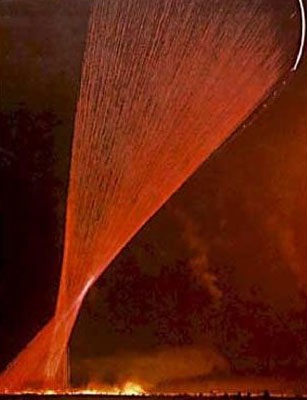 | |||||||||
| Features: | |||||||||
|
| ||||||||
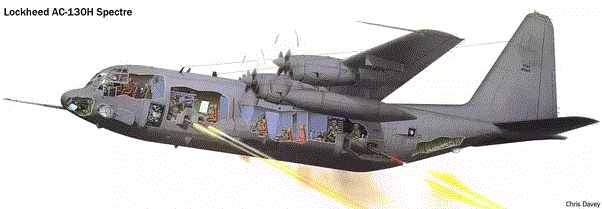
| |||||||||
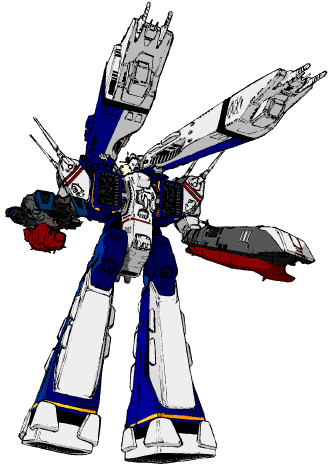 SDF-001 MACROSS. | SC-130 Hercules. |  SDF-001 MACROSS. | |||||||
| The SDF-001 MACROSS spacefold mishap led to the unintend acquisition of 4 C-130 transporsts (2 US Navy, 1 US Marine Corps, and the fourth US Coast Guard). Of the 4, there was barely enough survivors to man one plane; Between them and about 20 RDF recruits, three of the planes were converted sufficiently that they could be used to recover Veritech pilots who had become disabled in combat; Over 25 such missions were completed before the MAN OF WAR'S conversion to the same duties, resulting in over 100 pilots recovered. The crew were required to wear space suits, which created a problem of its own as there was not enough space inside the craft to wear a proper spacesuit. Instead, they crew were forced to wear a kind of limited spacesuit, basically a rubber bag inside cloth coveralls. These suits were not particularly durable, and several crewmembers were forced to use the ship's compression chamber (located aft) after having snagged their suits while working. The cockpit had to be sealed, as the pilots could not wear the suits while flying; As a result, the cockpit itself had to be modified to allow ingress separate from the rest of the ship. The wings were clipped just outboard of the engine nacelles and the engines replaced with rockets fabricated in the very hanger where the modifications were taking place. The SC-130's had a mind numbingly slow 30 knot top speed, but even this little bit helped to rescue RDF personnel; Lt (later Admiral) Rick HUNTER was rescued after an accidental friendly-fire incident by one of these craft. Though by no measure a good craft, the SC-130's served their purpose well for the 4 years they served; The last one, USCG 2016, remains on display at the Kyhron KRAVSEEVA Militry Museum alongside photos of her sisters. 2016 was selected because none of the American Coasties survived the Frist Robotech War; Of her crew, only one survived the spacefold mishap, and she died rescuing a Veritech pilot after the Battle Of Saturn. | |||||||||
